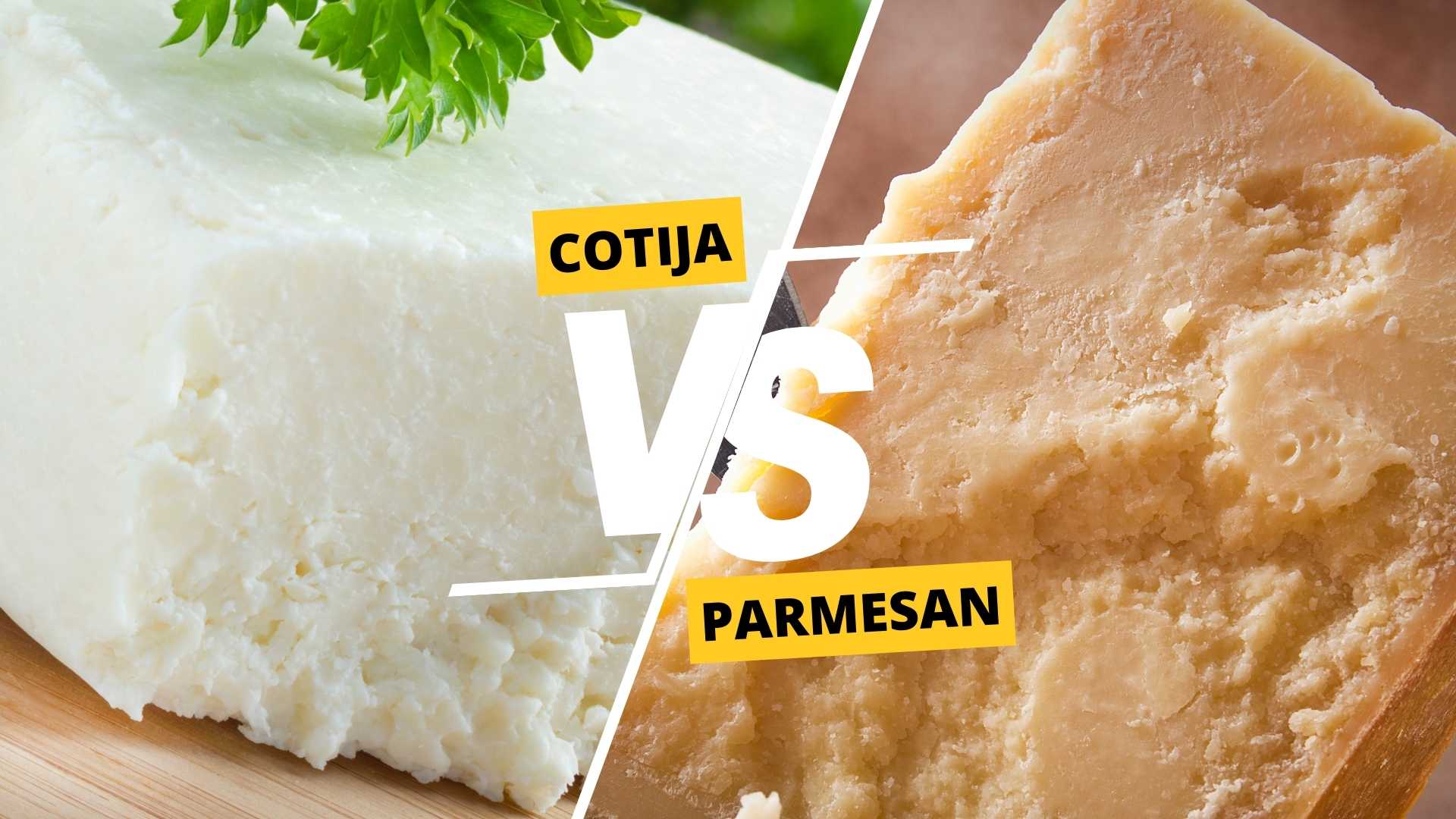Cheese has always been a favorite ingredient in various cuisines around the world. It comes in different textures, flavors, and colors, and it has been an essential part of many dishes for centuries. One of the most popular types of cheese is Parmesan, known for its nutty, savory flavor and granular texture.
Another well-known cheese, especially in Mexican cuisine, is Cotija, which has a salty and crumbly texture. While both kinds of cheese have similarities, they also have distinct differences that set them apart from each other. This article will explore the differences between Cotija and Parmesan cheese and help you decide which one is better for your dishes.
Comparison of Cotija or Parmesan
History and Origin
Parmesan cheese, also known as Parmigiano Reggiano, originates from the Parma and Reggio Emilia regions of Italy. It is an aged hard cheese made from unpasteurized cow’s milk, and it has a unique nutty, and savory taste. Parmesan cheese has been produced in Italy for over 800 years and is still produced traditionally to this day.
Cotija cheese is a Mexican cheese named after the town of Cotija in Michoacán, Mexico. It is a salty and crumbly cheese, made from cow’s milk, and is often used as a topping in Mexican dishes like tacos, enchiladas, and beans. Cotija cheese has been around for centuries and is an essential ingredient in many traditional Mexican dishes.
Flavor Profile
One of the most significant differences between Cotija and Parmesan cheese is their flavor profile. Parmesan cheese has a nutty, savory, and slightly sweet taste, with a subtle aroma. It is often used as a topping or ingredient in Italian cuisine, adding a burst of flavor to dishes like pasta, pizza, and risotto.
Cotija cheese, on the other hand, has a salty and tangy taste, with a slightly sour aroma. It is often used as a topping in Mexican dishes, adding a distinct saltiness to dishes like tacos, tostadas, and beans. The flavor of Cotija cheese is more intense and salty than Parmesan cheese, which makes it a unique ingredient in many dishes.
Texture and Appearance
Parmesan cheese is a hard cheese that has a granular texture, with a grainy and crumbly feel. It is often grated or shaved, and it melts quickly, making it an excellent ingredient in many dishes. Parmesan cheese has a pale yellow color, with small holes or “eyes” that form during the aging process.
Cotija cheese has a crumbly texture and is often used as a topping or garnish for Mexican dishes. It is not typically used in cooking because it does not melt well. Cotija cheese has a pale white color and is similar in texture to feta cheese. It can be crumbled or grated, adding a unique texture to dishes.
Nutritional Value
Both Cotija and Parmesan cheese are high in fat and calories, but they also have nutritional benefits. Parmesan cheese is a good source of protein, calcium, and vitamins A and B12. It is also low in lactose, making it a good option for those who are lactose intolerant. Cotija cheese is also a good source of protein and calcium but is higher in sodium than Parmesan cheese.
Culinary Uses
Parmesan cheese is a versatile cheese that can be used in many different dishes. It is often grated or shaved and used as a topping for pasta, salads, soups, and risotto. Parmesan cheese can also be used as an ingredient in sauces, bread, and other dishes, adding a distinct flavor to the dish.
Cotija cheese, on the other hand, is typically used as a topping or garnish in Mexican cuisine. It is often crumbled or grated and used as a topping for tacos, tostadas, and beans. Cotija cheese adds a salty and tangy flavor to dishes, making it a popular ingredient in Mexican cuisine.
Availability and Price
Parmesan cheese is widely available in most grocery stores, and it is usually sold in blocks or pre-grated form. Parmesan cheese can be expensive, with prices ranging from $10 to $20 per pound, depending on the quality and brand.
Cotija cheese can be more difficult to find in some areas, especially outside of the United States and Mexico. It is typically sold in specialty grocery stores or Mexican markets, and it can be expensive, with prices ranging from $8 to $15 per pound, depending on the brand and quality.
Cost-Effective Alternatives
If you’re on a tight budget, there are cost-effective alternatives to both Cotija and Parmesan cheese. One alternative to Parmesan cheese is Pecorino Romano, a hard cheese with a similar flavor profile to Parmesan cheese. It is often less expensive than Parmesan cheese, with prices ranging from $6 to $12 per pound.
For Cotija cheese, an alternative is feta cheese, which has a similar crumbly texture and salty taste. Feta cheese is widely available in most grocery stores and is typically less expensive than Cotija cheese, with prices ranging from $4 to $8 per pound.
Conclusion
In conclusion, both Cotija and Parmesan cheese have distinct differences in flavor, texture, and culinary uses. Parmesan cheese is a versatile cheese that can be used in many different dishes, adding a nutty and savory flavor to the dish. Cotija cheese is typically used as a topping or garnish in Mexican cuisine, adding a salty and tangy flavor to dishes.
When deciding which cheese to use in your dish, consider the flavor profile, texture, and culinary use of each cheese. Both Cotija and Parmesan cheese are excellent choices for adding flavor and texture to your dishes, but they are not interchangeable. Choose the cheese that best fits the dish you are preparing and enjoy the unique flavors and textures that each cheese offers.

